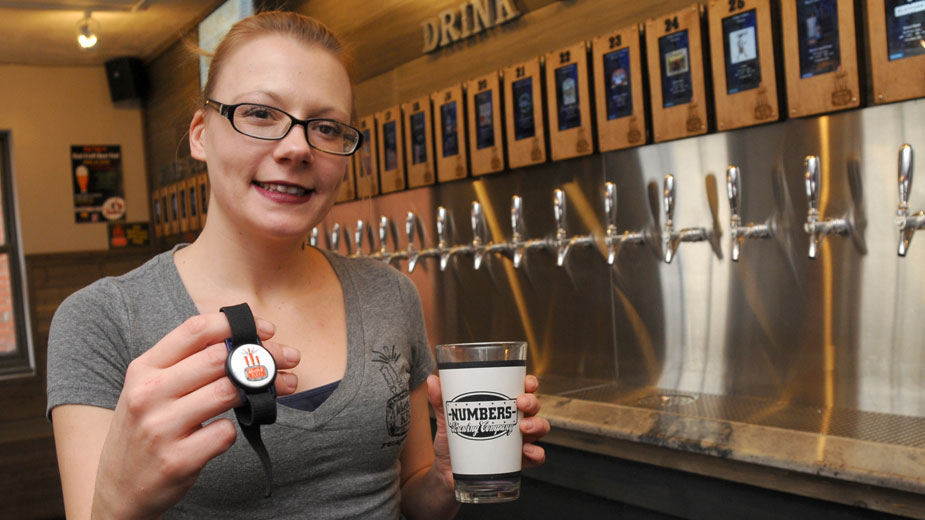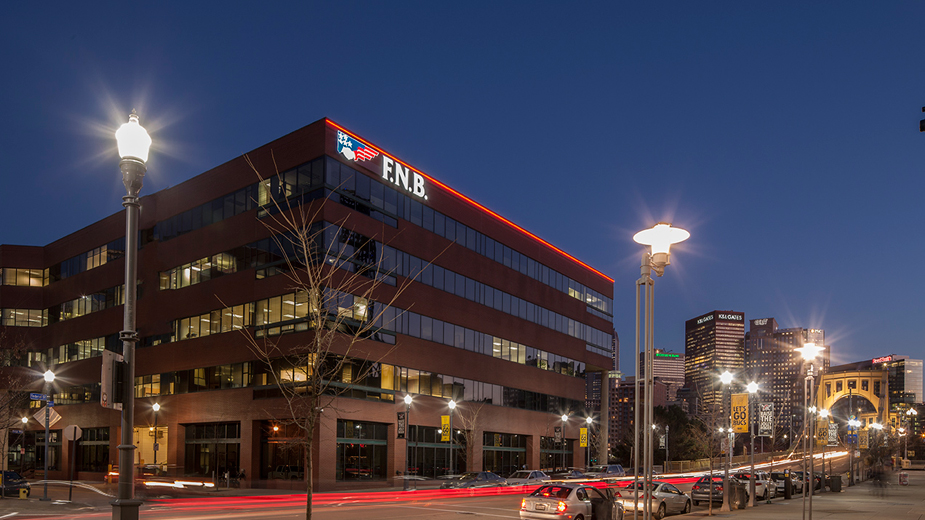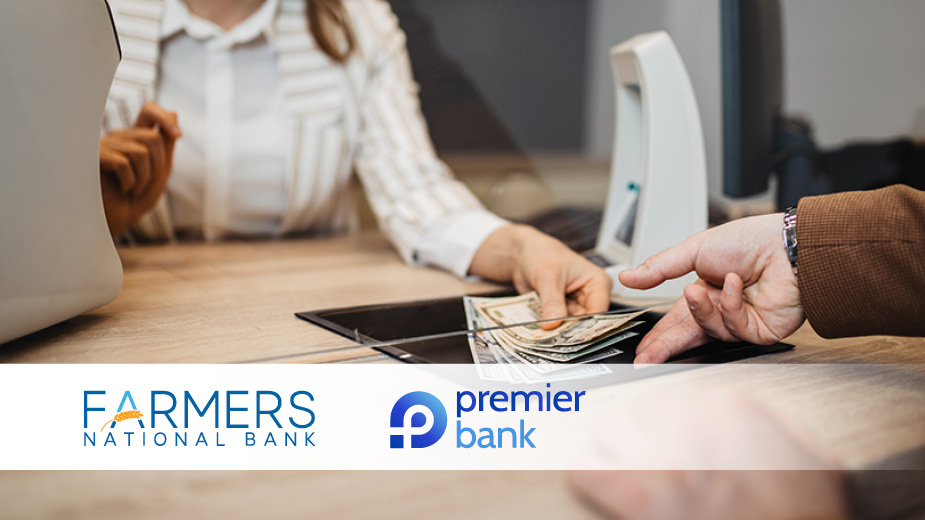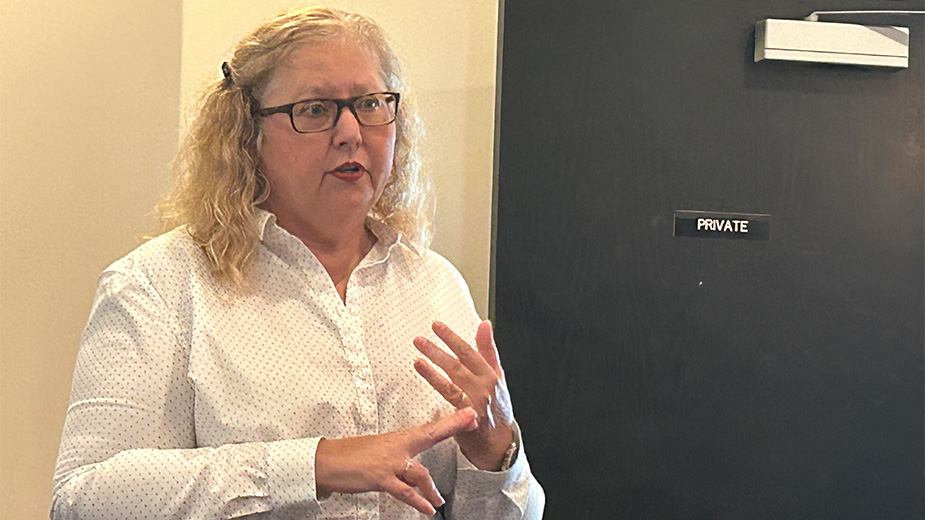No Cash? No Problem for These Businesses
YOUNGSTOWN, Ohio – Each morning around 7 o’clock, a line forms at the Starbucks in Boardman with customers waiting to pick up their orders before heading to the office.
The line that regularly stretches from the counter to the door moves quickly as almost every person pays without taking out their wallet. Another handful of people pass the line entirely and go straight to the counter to pick up their orders.
Both of these groups are paying through the Starbucks app, either by having an employee scan a barcode on their phones or by ordering and paying ahead in the app.
Paying with an app can get you free stuff.
“Most regulars pay with the app because they get their points and then they get their free drinks with their points, so it’s really popular,” says a shift supervisor at Starbucks, Ireland Blume.
Other benefits include a free drink on one’s birthday, the ability to order ahead, free in-store refills, access to member events and the ability to pay by phone.
Using the app doesn’t benefit just customers. It also creates efficiencies behind the counter for employees.
“We have been pushing for customers to use the app because it’s more convenient,” Blume says. “The app is the easiest because there’s no lull with our system.”
Blume estimates half of the customers at the Starbucks pay with the app, 30% with a credit or debit card and 20% with cash, along with a dozen of people daily paying with Apple Pay or Chase Pay.
“I’ve definitely seen the app at Starbucks being used by a lot more people over the years,” Blume says. “It’s quick and easy and I’ve never seen that before at any other kind of place.”
In June 2018, Starbucks reported that its rewards members have increased 13% year-over-year to 15 million members. The coffee chain is just one of the companies around the world moving toward going cashless. In 2018, Starbucks opened its first cashless store in Seattle to test how digital and credit card payments affect customer behavior.
Credit card purchases increase while ATM withdrawals decline.
The Federal Reserve Payments Study reports that card payments continued to increase from 2016 to 2017 by 10.1% in frequency and 8.4% in value, while the number of large-institution ATM withdrawals declined by 2.8%, but increased in value by 0.5%.
In January, Planet Fitness announced it would be going cashless at its Boardman, Niles, Austintown and Hermitage, Pa., locations for all in-house purchases, including drinks or snacks at the front desk. Before the franchised gym began going cashless, it asked members to bring a credit or debit card to link to their accounts to pay for future purchases.
The Planet Fitness locations are, “making the transition to a cashless payment model in order to provide another level of convenience for our valued members,” the company said in a statement.
Whereas some retailers are switching to a cashless payment system, Whistle & Keg in downtown Youngstown built its self-serve taproom to be cashless when it opened in September 2017, says manager Haley Luckage. The taproom accepts credit, debit or Whistle & Keg gift cards.
When you arrive, you check in with your ID and your debit or credit card. You’re given a wristband, which gives you access to the 48 taps at the bar. The drinks, including beer, wine, cider, mead and kombucha are priced by the ounce. When you checkout, you turn in your wristband, allowing cashiers to pull up your tab and accept your payment.
At least one person weekly asks to pay with cash, which can be awkward at times, Luckage admits, but usually the customer’s friend will pay for the tab on their card and the two square up later.
“Sometimes people are surprised when they find out we don’t accept cash. But they’re usually not upset or angry,” she says. “I hear a lot of our customers using Apple Pay and Venmo to pay each other back.”
There are advantages to being cashless, Luckage says. Among the benefits, all transactions are recorded on the computer; cashiers don’t have to count money in the register at the end of the night and for security purposes.
“There’s usually only one or two employees here at a time,” she says. “The fact that we don’t have any cash makes it a lot less appealing to rob.”
This month, Whistle & Keg is planning to open a second location in Cleveland at 818 Huron Road East. This taproom will also be cashless, Luckage says.
One downfall to being cashless is if someone’s credit card fails and he lacks an alternative payment. “It’s really not an issue though,” Luckage says. “I really like not taking cash and I think it will be more common as we move into the future here.”
The Mahoning and Shenango valleys are a few years behind in the cashless movement, as bigger cities have more cashless chains, such as Drybar hair salons and Sweetgreen restaurants.
In 2018, most payments in North America were done with a credit card, not cash. According to WorldPlay, North America made 41% of its point-of-sale payments with a credit card, 16% with cash and 3% with a mobile wallet. In 2022, it is projected that credit card payments will constitute 44% of transactions, cash will fall to 11% and mobile wallet payments will increase to 7%.
In 2018, 30% of point-of-sale payments were with cash, 27% were completed with a mobile wallet and 16% were with a credit card. In 2022, it is projected that mobile wallet payments will jump to 42%, cash will make up only 14% of payments and credit card payments will remain steady at 16%.
Asia stands at the forefront of payment innovation with mobile-wallet payments.
“In China, it has stretched further and faster but many of those same technologies, including mobile payments and person-to-person payments, are growing in the United States too,” says Bill Adams, PNC Bank senior economist.
“The U.S. already has a large installed base of an electronic payment system based on card-based payments. So it’s slower to displace that, whereas China is moving directly from cash to the latest in digital-payment technology.”
Adams experienced the mobile-wallet phenomenon firsthand on a recent trip to China. He recalls visiting a coffee shop-chain that accepted payments only through its mobile app.
“All of their customers walk up and scan the barcode on their phone and grab their coffee and go,” he says. “It’s part of the transition of the Chinese economy away from an industrial economy, to a post-industrial, internet-consumer economy and that makes payments faster, more efficient and more secure.”
However, going completely cashless in any economy creates a barrier to those who are not part of the financial system.
“The challenge with a digital-payment system is it works much better in aggregate, but it creates the risk of leaving people out who don’t have access to the system,” Adams says. “Visiting China, I’m a tourist. So the coffee chain isn’t set up to allow people like me to participate in it.”
In the United States remains a small percentage of “unbanked” people who do not have an account at an insured institution. A 2017 survey from the Federal Deposit Insurance Corp. estimates that 6.5% of households, about 8.4 million, in the United States are “unbanked.”
“That’s a gap in the financial system that this kind of innovation will create, but it’s also an opportunity for businesses to find ways to serve these under-served customers,” Adams says.
From a macroeconomic perspective, going cashless would create more productivity, he continues.
An example, already seen at cashless retailers or places such as Starbucks where customers are more apt to pay digitally, is the accelerated process of checking out. It is much faster if one doesn’t have to count out his cash and then wait for the employee to count any change that needs to be returned.
“You’re increasing the amount of activity one person can do over the same period of time using the same effort,” Adams says. “That’s the sort of driver of long-term economic growth and long-term income growth that leads to higher living standards over time.”
Young consumers are pushing the adoption of cashless technologies further and faster.
Payment trends are leaning toward going cashless as the younger consumer adopts the newer technologies faster than the generation before, Adams says. But will the United States ever become a total cashless society?
“It’s hard to imagine the U.S. as a completely cashless society. But a lot of technologies that exist today would have been really hard to imagine 30 years ago,” Adams says. “If the U.S. becomes a completely cashless society, that transition is far off in the future.”
Pictured: Haley Luckage, manager of Whistle & Keg in Youngstown, holds the wristband customers must wear to keep track of which drinks they purchase.
Copyright 2024 The Business Journal, Youngstown, Ohio.



